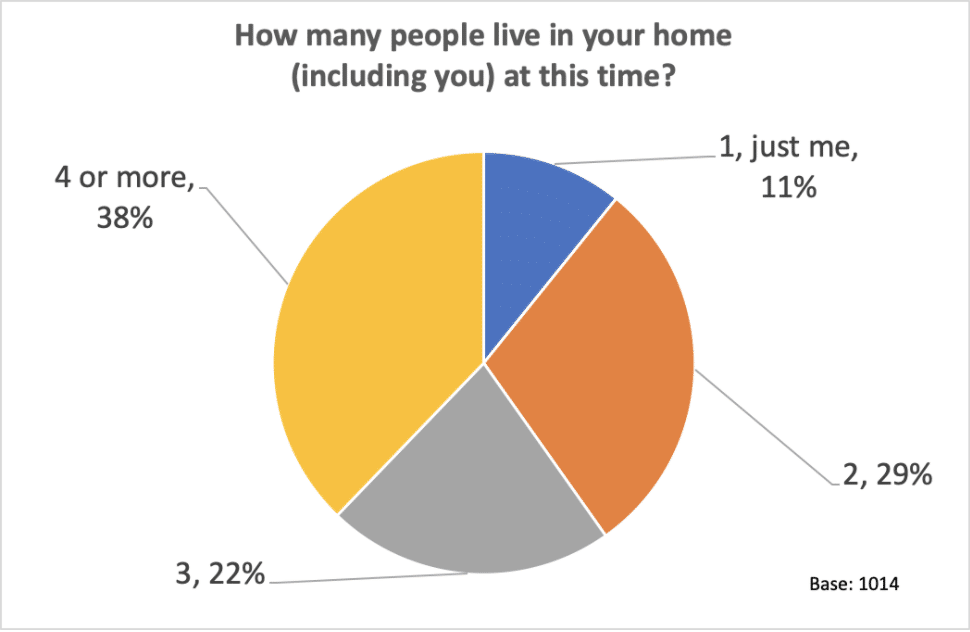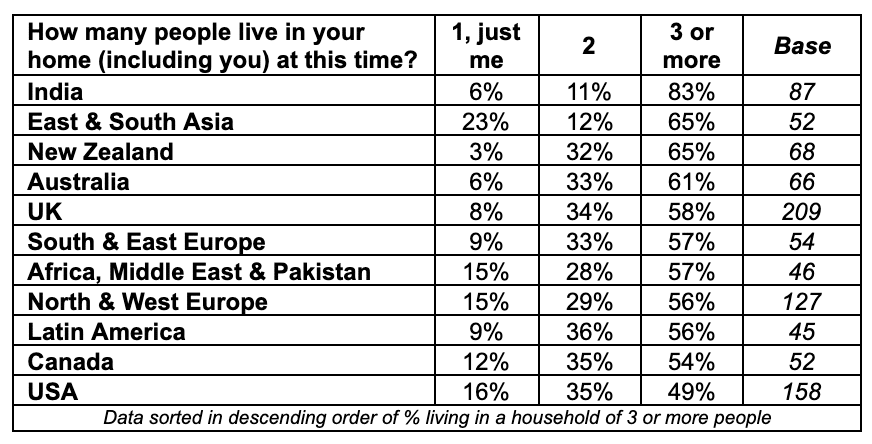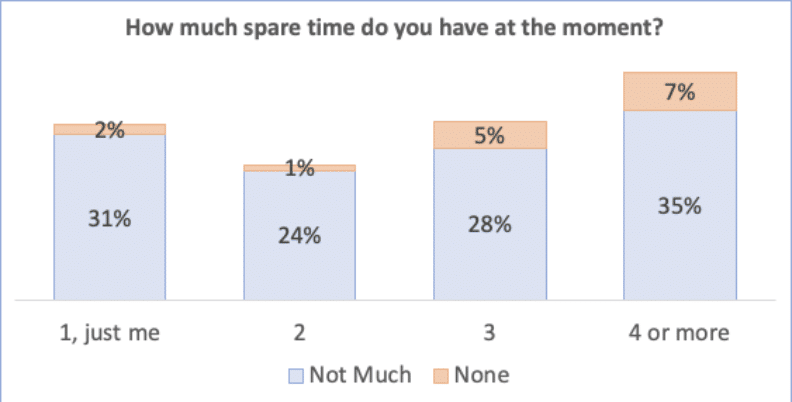Categories
April 21, 2020
Looking at Market Researchers and Insight Professionals Through a Human Lens
A look into the MRX industry and the effect of COVID-19.
0
One of the trends in business, marketing, and insights (prior to the crisis) was growth in interest in the whole person, i.e. the human. Rather than thinking of customers, voters, viewers, research participants, etc, the trend with HX (Human Experience) is to think about the person, not the transaction. One element of the shift to HX is the realization that people don’t rotate around brands, brands rotate around people.
The current crisis has brought home that message even more strongly. Employers need to use a human lens to understand what is happening to their people. And, the research industry should focus on the humans that comprise the research industry, not just the tasks the industry needs to do.
NewMR has just run a study with over 1000 market research and insight professionals (with the help of organizations like GreenBook), asking people how they are and what they need (you can read that report by clicking here).
The survey contains plenty of work-related questions, but to use a human lens we need to think of market researchers and insight professionals as people. With that lens in mind, for this post, I looked at the data to see what I could glean about the people who interacted with our study in terms of the number of people in their household.
Working from Home and Household Size
In 40 years of research, I don’t think I have ever included the size of a household question in a B2B study (and a survey about market research and insight professionals is a B2B study). However, in this NewMR study, we included exactly that question.
How many people live in your home?
Have you ever wondered how many market researchers are single people living alone? Perhaps you wondered how many live in a family situation? Here is the data from our study, based on 1014 responses, from 70 countries.

About 60% of participants live in households with more than two people, and just 11% are in single-person households. When we think about how work interacts with people’s home life, we need to remember that in about 90% of cases we are not just thinking about our colleague, there are other people in the relationship.
The picture above belongs to the total sample, but there are important variations by country/region. In our study, we report each country that has 40 or more responses, the other countries we have aggregated into regions.

In India, 83% of our participants lived in households with 3 or more people. At the other end of the scale, in North America, only about half the participants live in households with three people and about half in two or single-person households – raising a different balance of challenges.
Two-person Households Seem Best Suited to Working from Home
We asked people whether working from home suited them, and offered three choices, ‘Yes’, ‘No’, and ‘Don’t Know’. Our assumption is that any answer other ‘Yes’ is a cause for some concern. The group with the lowest level of concern was those in two-person households, where 16% said ‘No’ or ‘Don’t Know’. The highest level of concern is about those in households with 3 or more people, with 23% saying ‘No’ or ‘Don’t Know’. The percentages are small, and the gap is not very large, but it does suggest an association with the size of household and how well working from home is working out.
Larger Households have Less Spare Time
In terms of how much spare time people said they had at the moment, we see a U-shaped distribution with the households with four or more people being the most likely to say they had little spare time and those in two-person households the least likely to say they had limited spare time.

Open-ended Comments Illustrate the Impact of the Household
Many of the open-ended comments illustrate the importance of taking into account the rest of the household when thinking about how people function when working at home.
For example:
- “Trying to work from home, but not managing to do so as I no longer have access to the server in the office and I am trying to home school children with challenging needs”
- “The additional pressure of younger children in-home needs to be a factor in analyzing the results … home-schooling and cooking 4 meals per day on top of usual BAU activity is exhausting.”
“I’m relatively lucky, as only one child at home working fairly independently with schoolwork. But working from home still has its challenges in a small apartment, as we don’t have enough separate spaces for everyone.” - “As we are extremely pressed for time at moment (home-schooling, working from home full-time, meeting family/ kids’ needs 24/7, pursuing information/ coaching, etc) and sometimes chaotically so, repeat information and make it as concise and easy to digest as poss.”
People do not Rotate Around Work, Work Rotates Around People
In a traditional work setting, e.g. an office, it is easy to forget that people’s lives are mostly centered-on other things (other than work). When people come to work, they put on their work clothes, they are separated from their loved ones, from their clubs and activities, and other distractions – so a work-centric model works (for most people, most of the time). However, as the data above illustrate, when our work moves into people’s homes, the interaction between people’s lives and work becomes much larger, and we need to find ways of making it work. The number of people in the household will be just one of the factors of people’s ‘real lives’ that will impact work, and we need to recognize that.
We need to listen, we need to be empathetic, and we need to re-think our work models. Simply transferring work from the office to home (and throwing in a few Microsoft Teams or Zoom meetings) is not likely to be good enough.
Disclaimer
The views, opinions, data, and methodologies expressed above are those of the contributor(s) and do not necessarily reflect or represent the official policies, positions, or beliefs of Greenbook.
Comments
Comments are moderated to ensure respect towards the author and to prevent spam or self-promotion. Your comment may be edited, rejected, or approved based on these criteria. By commenting, you accept these terms and take responsibility for your contributions.
More from Ray Poynter

The Future Place
Word Cloud Plus Extracts Hot Buzz Topics
The GRIT data collected toward the end of 2022 included 918 open-ended replies to the question “Related to insights, research, or analytics, which topics do you follow most closely and…
By Ray Poynter
Research Methodologies
Observational Data Has Problems. Are Researchers Aware of Them?
Observational data is a tempting shortcut for insights but researchers must consider its potential shortfalls
Business-to-Business (B2B) Market Research
Want it Faster, Cheaper, Better? Then You’d Better Sign Up to Prescriptive Analytics
Using Prescriptive Analytics to navigate the data-filled world.
Company Size Matters: The Differential Impact of COVID-19
A deep dive into the very different experiences of the MRX community during COVID-19.
ARTICLES
Top in Quantitative Research
Research Methodologies
Moving Away from a Narcissistic Market Research Model
Why are we still measuring brand loyalty? It isn’t something that naturally comes up with consumers, who rarely think about brand first, if at all. Ma...
Sign Up for
Updates
Get content that matters, written by top insights industry experts, delivered right to your inbox.
67k+ subscribers



